1. Paddling Students in Front of the Class
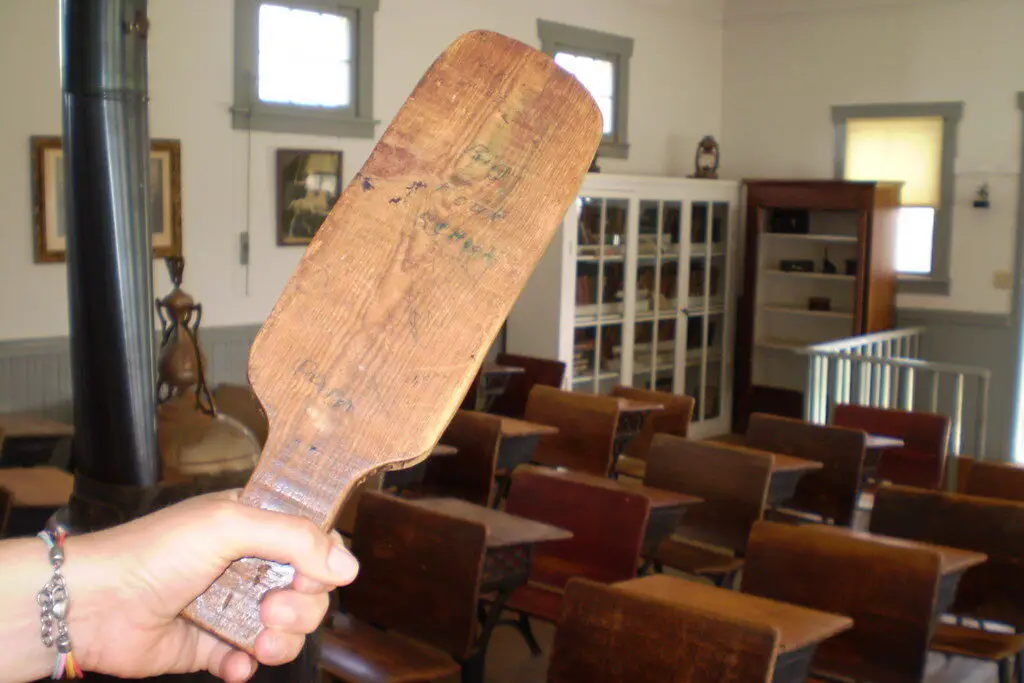
Back in the ’50s, corporal punishment wasn’t just allowed, it was expected. If you stepped out of line, you might get a swift whack with a wooden paddle, often with the whole class watching. It was a public spectacle meant to shame students into behaving. Some teachers even had paddles with names or holes drilled in them to reduce air resistance. Parents usually sided with the teacher too, saying you probably deserved it. Today, that kind of discipline would be considered abusive and grounds for immediate termination says Kansas City Star.
Physical punishment in most schools is banned, and educators are trained in trauma-informed practices. Times have definitely changed for the better when it comes to handling bad behavior. Instead of humiliation and pain, schools focus more on positive reinforcement and understanding the root cause of problems. And thankfully, paddles have been retired for good adds USA Today.
2. Making Left-Handed Kids Write Right-Handed

Being left-handed was once seen as a flaw that needed correcting. Teachers would force left-handed kids to switch to their right hand for writing, even if it caused frustration, discomfort, or messy handwriting. It wasn’t just annoying—it was damaging to confidence and learning. In some schools, students were punished or ridiculed for using their dominant hand. The thinking was that being “different” wasn’t acceptable in a rigid classroom environment. It was a battle lefties didn’t ask for and certainly didn’t deserve says Undark Magazine.
Today, we understand that handedness is a natural difference, not a defect. Forcing a switch can actually hinder learning and development. Modern classrooms encourage kids to use whatever hand feels most comfortable. Tools like left-handed scissors and desks show how far we’ve come. Now, being a lefty is just another cool quirk shares TIME Magazine.
3. Sending Girls Home for Wearing Pants

In many schools during the ’50s, girls weren’t allowed to wear pants, period. Dresses or skirts—often below the knee—were the only acceptable options. If a girl showed up in slacks, she could be sent home or written up for violating the dress code. The rules weren’t about comfort or practicality, but about preserving “femininity.” Cold weather? Too bad. That’s what tights were for.
Today, telling a student what to wear based on outdated gender norms would be seen as discriminatory. Most schools now aim for policies that support comfort, expression, and equality. Girls wearing pants is not just acceptable, it’s normal. And forcing outdated ideas of how someone should dress would spark immediate backlash from both students and parents.
4. Segregated Classrooms by Race

It’s hard to imagine now, but in the ’50s, many schools were still racially segregated. Black and white students attended separate schools, often with massive disparities in funding, resources, and opportunity. Even after Brown v. Board of Education in 1954, integration was slow and met with resistance. Some teachers refused to teach in integrated classrooms, and schools came up with all kinds of tricks to delay compliance. Students of color were constantly reminded they were second-class citizens.
Today, racial segregation in public schools is illegal, and forcing it would be immediate grounds for dismissal and lawsuits. Teachers are now expected to promote diversity, equity, and inclusion. While schools still face challenges around inequality, no teacher could get away with endorsing or enforcing segregation. It’s a reminder of how far we’ve come—and how far we still have to go.
5. Making Girls Take Home Ec Instead of Science
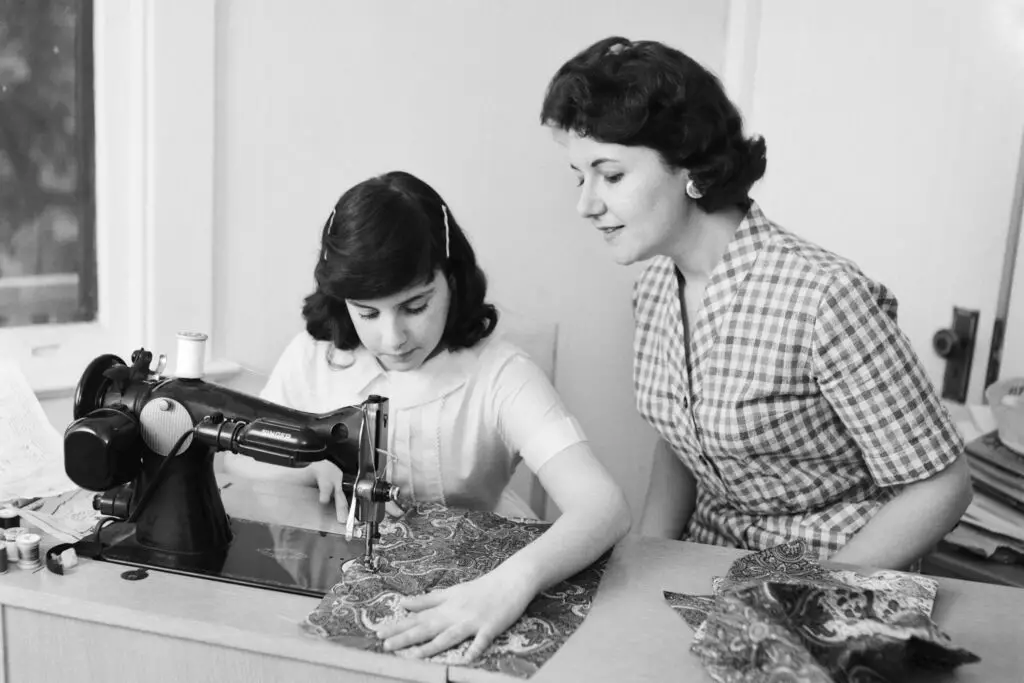
In many schools, girls were funneled into home economics while boys got to take shop or science. It didn’t matter if a girl dreamed of being a scientist—her “place” was learning how to sew, cook, and care for a home. These decisions were often baked into the school’s policies, with little room for choice. Teachers enforced these gender roles without question. It wasn’t just unfair, it was limiting.
Today, that kind of curriculum bias would be called out immediately. Students can—and should—pursue whatever subjects interest them, regardless of gender. Forcing kids into classes based on outdated stereotypes is not just frowned upon, it could cost a teacher their job. Schools are working harder now to encourage inclusivity in STEM and beyond.
6. Publicly Weighing Students
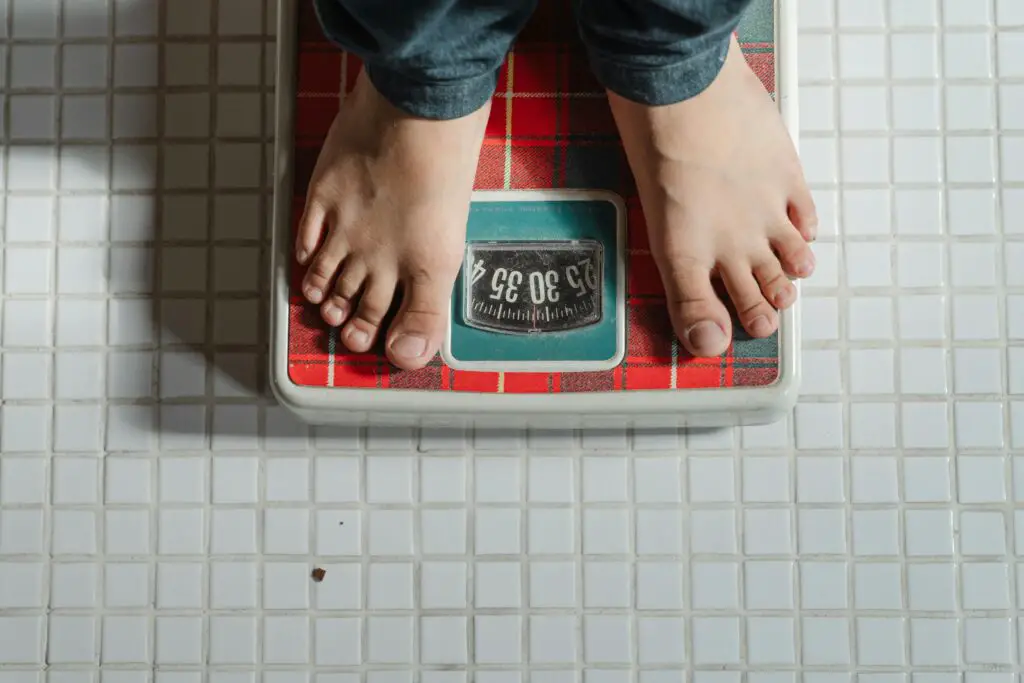
Some teachers, especially in gym class, used to weigh students in front of their peers. The numbers were written down for all to see, often followed by comments about who needed to “slim down.” It was humiliating, especially for kids who were already self-conscious. Health was framed as appearance, and little attention was paid to sensitivity or mental well-being. What might have seemed like a routine measurement could have lifelong emotional impacts.
Today, any teacher who weighed students in public would be in serious trouble. Schools are much more aware of body image issues and the importance of privacy. Health and fitness are taught with a focus on personal goals and well-being, not shame. Educators now know that humiliation is not a motivator—it’s a trauma.
7. Enforcing “No Talking” Rules at Lunch

In some ’50s schools, lunchtime was not a time to unwind—it was dead silent. Students were required to eat without speaking, often under the watchful eye of a strict lunch monitor. If anyone whispered or giggled, they could be punished. The reasoning was that noise led to chaos, but in reality, it made lunchtime feel like detention. For some kids, it was the only time they could socialize all day.
Today, social development is considered just as important as academics. Kids need breaks, conversation, and connection with their peers. Enforcing a no-talking rule would be seen as needlessly harsh. Teachers and administrators now aim to balance structure with humanity. A quiet cafeteria might sound peaceful, but it sure doesn’t sound like childhood.
8. Shaming Left-Behind Students

Back in the ’50s, students who fell behind were often singled out. Teachers might make them stand up to read, knowing they would stumble. Failing grades were announced aloud or posted for everyone to see. It was meant to motivate—but mostly, it embarrassed and discouraged. There wasn’t much support for students who learned differently. Instead, they were labeled “slow” or “lazy.”
Today, that approach would be completely unacceptable. Teachers are expected to provide accommodations and support, not shame. Public humiliation would be considered bullying, not discipline. Education now recognizes that students learn in many different ways, and that’s not something to punish.
9. Punishing Students for Speaking Another Language

In some schools, especially in the Southwest, students who spoke Spanish or any other non-English language were punished. They could be made to stand in a corner, write lines, or even have their mouths washed out with soap. Some were forced to wear signs saying things like “I will not speak Spanish.” These punishments weren’t just harsh, they were deeply rooted in cultural erasure. It made kids feel ashamed of their identity.
Today, this would be seen as blatant discrimination and grounds for immediate dismissal. Schools now celebrate multilingualism and encourage bilingual education. Teachers are trained to be culturally responsive and inclusive. What was once punished is now viewed as an asset.
10. Banning Leftover Food or Packed Lunches

In some schools during the ’50s, students weren’t allowed to bring lunch from home. Everyone ate the school-provided meal, whether they liked it or not. If you didn’t finish everything, including the mystery meat or canned peas, you could be reprimanded. Some teachers even checked trays before you were allowed to leave. It was wasteful, inflexible, and often unfair to kids with allergies or religious dietary needs.
Today, that kind of policy would raise red flags for parents and health advocates. Packed lunches are common and often necessary. Kids are given more choices and dietary needs are respected. Teachers no longer monitor trays like food inspectors. Mealtime has become more about nourishment than power plays.
11. Requiring Boys to Cut Their Hair
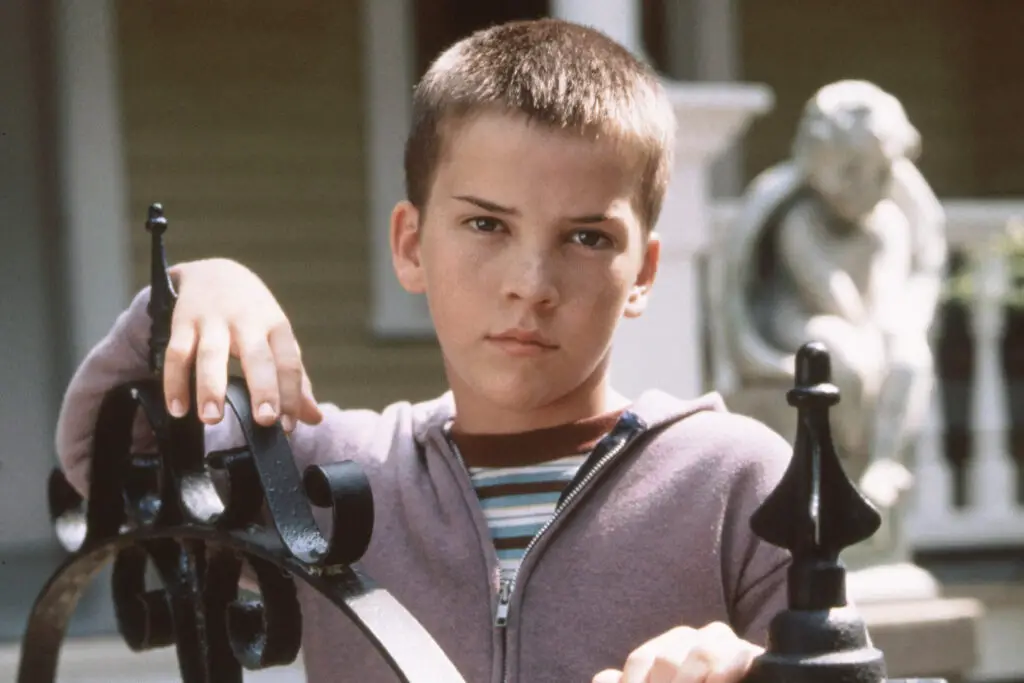
Boys in the ’50s were expected to keep their hair short, clean-cut, and tidy. Long hair was seen as rebellious or unkempt, and some schools even had rules about acceptable hair length. Teachers would measure hair above the collar or ears. If it was too long, you could be sent home or told to get it cut. These rules had nothing to do with hygiene and everything to do with conformity.
Today, forcing a student to cut their hair would be a serious issue. Schools have become more aware of cultural expression and individual rights. Personal grooming choices, especially those tied to culture or identity, are protected. Teachers enforcing these outdated rules would face pushback—and possibly a pink slip.
12. Allowing Teachers to Smoke in the Classroom

Yes, it really happened—teachers smoking at their desks while teaching. Some would even send a student to fetch them a fresh pack from the teacher’s lounge. The classroom would fill with smoke, and no one seemed to think twice. It was seen as normal, even sophisticated. Meanwhile, students sat in secondhand smoke all day long.
Today, smoking on school grounds is not only banned, it’s unthinkable inside a classroom. A teacher lighting up would be instantly removed. We now understand the dangers of secondhand smoke, and schools have strict health and safety regulations. It’s hard to believe how different things were just a few generations ago.
13. Enforcing Silent, Hands-Folded Desks for Hours
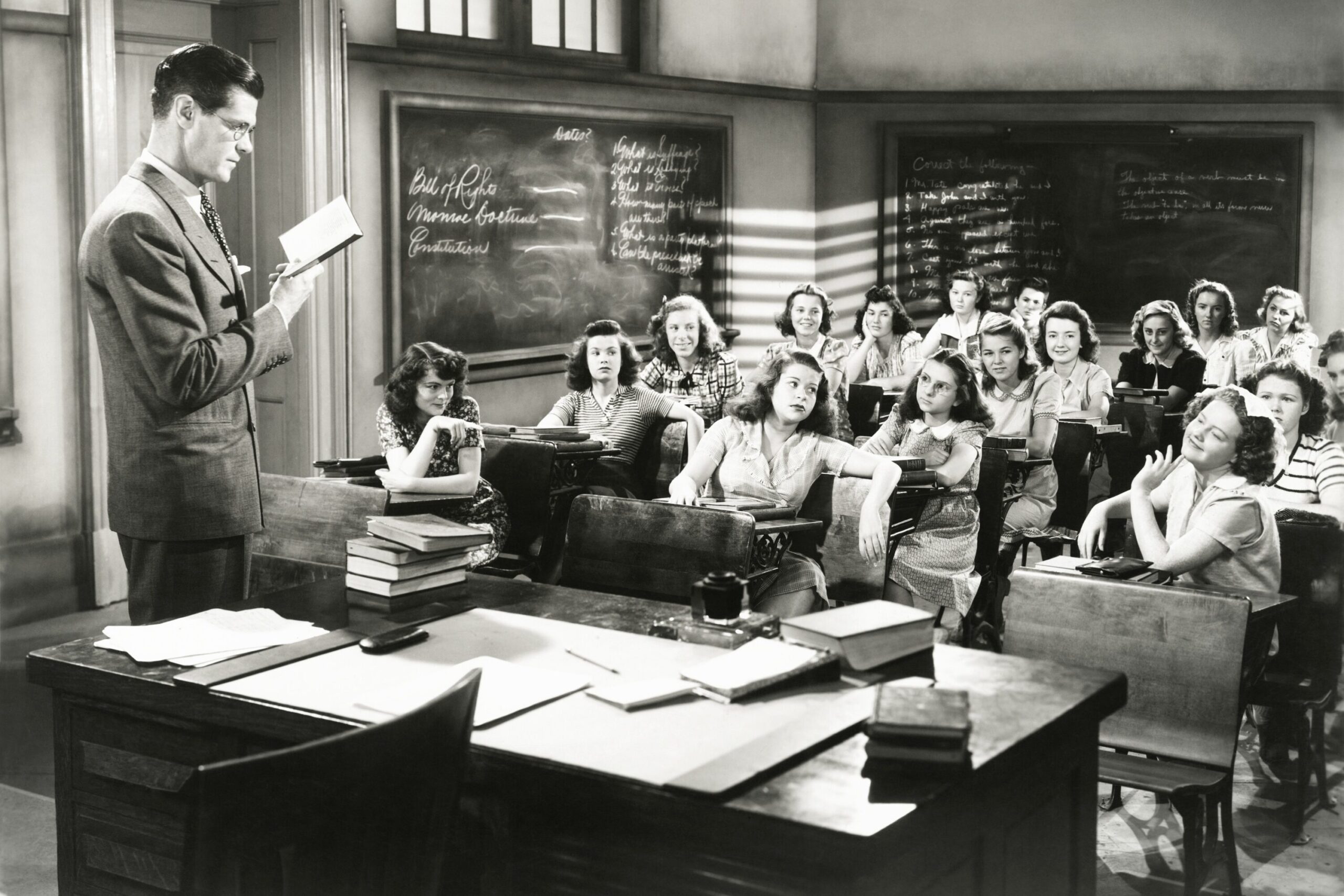
Many ’50s classrooms operated under strict silence. Students had to sit with their hands folded, backs straight, and mouths shut for hours. Any whispering, fidgeting, or looking out the window could lead to discipline. It wasn’t about learning—it was about control. The idea was to instill discipline above all else, even curiosity.
Today’s classrooms look—and sound—very different. Active participation, group work, and movement breaks are encouraged. Teachers understand that kids learn best when they’re engaged, not when they’re silent and still. Strict silence for hours would be considered poor teaching, not proper discipline. Thankfully, we’ve come a long way.
